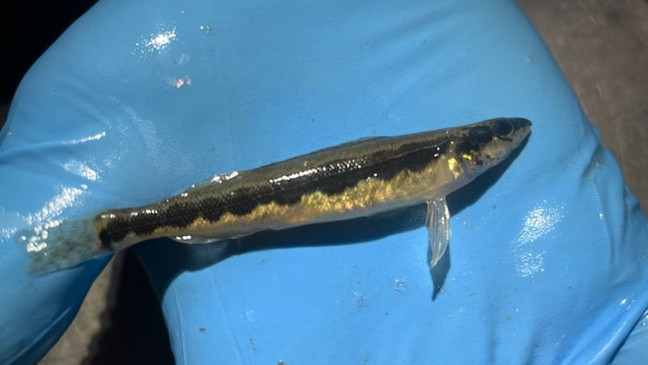
For the first time since 1939, a little-known fish thought to be extinct in the area has been found in the Ohio River.
The longhead darter is such a rare fish that the International Union for Conservation of Nature does not list its status owing to a lack of information.
Fish management personnel caught two this autumn during Ohio River electrofishing bass surveys, according to the Ohio Division of Wildlife.
“Who dis?” reads a photo uploaded on the wildlife division’s website. It’s a longhead darter, believe it or not! What makes us so ecstatic? This fascinating species, endemic to Ohio, was considered to have been extinct.”
The wildlife division clarified what ‘extirpated’ meant for individuals who didn’t know. “The word refers to creatures that have gone extinct locally but not entirely from the world.” Fortunately for the longhead darter and those of us who care about it, this species has not become extinct in Ohio.”
These were the first longhead darters caught in Ohio since 1939, when Milton B. Trautman caught seven in the Walhonding River, a major tributary of the Muskingum River in east-central Ohio, according to the department.
According to the Guide to the Fish of Ohio, longhead darters feature a series of black blotches running down their sides, joined by a broad lateral stripe. “Their blotches are always wider than they are tall.” They have three dark spots along the jaw line on each side of the head, which distinguishes them from the extremely similar dusky and blackside darters. The largest and furthest back of these frequently coincides with a noticeable tear drop, making a black crescent from the eye to the back of the jaw. The first dorsal fin of longhead darters has a small dark stripe at the base. The remainder of their fins are covered in many tiny dots that typically form rows.
The body of this darter species is never brightly colored.”
In fast-moving streams and rivers, longhead darters can be found. According to the Guide to the Fish of Ohio, they are generally found in pools with rapid currents around boulders or cobble-sized pebbles. Only seven longhead darters had ever been discovered at the time the guide was published. All of them were discovered in Coshocton County’s Walhonding River.
Longhead darters lay their eggs in the spring. They deposit their eggs in riffles and bury them in sand or gravel to protect them from predators. They don’t look after the eggs or the young in any way.
According to the New York State Department of Environmental Conservation, the longhead darter may also be found in the Ohio, Tennessee, and Allegheny River drainages in New York, Pennsylvania, Ohio, West Virginia, Kentucky, Virginia, Tennessee, and North Carolina.
The Ohio River flows southwesterly from far western Pennsylvania, south of Lake Erie, to its mouth on the Mississippi River at the southern point of Illinois, covering almost 1,000 miles.
